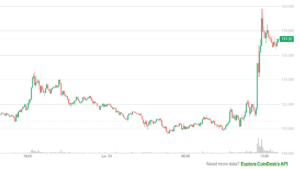South Korea’s Banking Consortium Launches Korean-Won-Pegged Stablecoin
In a groundbreaking initiative, South Korea’s eight largest commercial banks have come together to launch a Korean-won-pegged stablecoin, marking a significant advance in the country’s digital financial landscape. This unprecedented collaboration forms the first unified financial consortium dedicated to the purpose of issuing a national stablecoin. Coordinated by the Open Blockchain & Digital Identity (DID) Association and supervised by the Financial Supervisory Service (FSS), the consortium aims to pilot the stablecoin issuance by early 2026. The major banks involved—KB Kookmin, Shinhan, Woori, NH Nonghyup, Industrial Bank of Korea, Suhyup, Citibank Korea, and Standard Chartered First Bank—represent a substantial portion of South Korea’s retail banking sector, indicating strong institutional backing for this initiative.
The motivation behind the stablecoin launch stems from a significant uptick in the usage of foreign stablecoins, such as USDT and USDC, which saw a staggering ₩56.95 trillion ($41.6 billion) in trade volume during the first quarter of 2025. This figure has increased threefold since Q3 of 2024, raising concerns among Korean bankers. As one source noted, there is an urgent need to curb the potential dominance of foreign dollar-pegged coins in the domestic market. This consortium represents a strategic response aimed at reclaiming some semblance of monetary sovereignty, mitigating risks and uncertainties associated with the growing reliance on foreign stablecoins.
A Dual Model Design to Foster Trust
Unlike previous fintech-led projects, this consortium proposes a dual issuance model aimed at addressing public trust and scalability. The first track features stablecoins backed by client funds held in escrow through a trust structure, while the second is directly linked to on-balance-sheet deposits held by the banks themselves. This dual framework is designed to reassure users by providing transparency and stability, particularly in the wake of South Korea’s tumultuous experience with the Terra-Luna collapse in 2022. By prioritizing user confidence through a fully backed model, the consortium aims to establish a reliable foundation for the growing digital asset ecosystem in the country.
Support for this initiative has also been echoed by the Bank of Korea (BOK), which views the involvement of established banks as a way to ensure regulatory compliance and stability within the digital currency space. Senior Deputy Governor Ryoo Sang-dai recently stated the importance of allowing banks to lead the charge in issuing won-based stablecoins while slowly considering the inclusion of fintech firms in the future. This cautious yet strategic approach signifies a deliberate attempt to lay the groundwork for successful digital currency issuance while maintaining oversight and regulation.
Reasserting Monetary Sovereignty
The formation of this stablecoin consortium is a clear indicator of South Korea’s desire to reaffirm its monetary sovereignty amidst the increasing prevalence of digital assets. As foreign stablecoins disrupt traditional financial systems, there is an urgent concern that the Korean won could lose its relevance in domestic transactions. Currently, South Korea finds itself in a race against time, as it seeks to catch up with nations like Japan and the European Union, which have already made significant strides in the realm of stablecoins. Japan’s launch of Progmat Coin by major banks and the European Central Bank’s European Regulation on Crypto-Assets (MiCA) framework have set a precedent that South Korea aims to follow.
Some observers argue that South Korea’s move is a defensive strategy to protect its currency, while others posit that it represents a more proactive stance. If successful, the won-backed stablecoin could establish itself as a regional clearing asset, particularly in sectors like gaming, K-pop merchandising, and cross-border remittances. The consortium’s aim is not just to keep pace, but to potentially position South Korea at the forefront of digital asset innovation in the Asia-Pacific region.
From Caution to Coordination
The tumultuous aftermath of the Terra crisis, which originated in Korea and led to significant investor losses, has cast a long shadow over the country’s stablecoin landscape. In response, the banks’ commitment to creating a fully backed stablecoin model, supplemented by robust transparency measures likely to be integrated into the forthcoming Digital Asset Act, signals an effort to restore public trust. The success of this initiative will ultimately depend on securing regulatory approval from the FSS, which will conduct thorough risk assessments and consult closely with the Bank of Korea before providing a green light for the stablecoin’s launch.
Upon gaining regulatory approval, the won-backed stablecoin is anticipated to be integrated into existing digital banking applications and payment systems. Initial use cases are expected to include remittances, peer-to-peer transfers, and interbank settlements. If the consortium achieves its goals, it could provide valuable insights into South Korea’s long-term roadmap for Central Bank Digital Currency (CBDC) development, establishing a blended ecosystem of traditional and digital financial services.
The Future of Stablecoins in South Korea
As Asia quickly emerges as a hotspot for regulatory experimentation surrounding stablecoins, South Korea’s banking consortium has positioned the won on the digital map. The evolution of this stablecoin initiative presents a unique opportunity for South Korea to adapt to the rapidly changing landscape of digital finance. However, the consortium faces the critical challenge of scaling its operations effectively before the dominance of dollar-pegged stablecoins becomes even more entrenched in the local market.
With the global financial landscape evolving at a rapid pace, the next few years will be pivotal for South Korea’s stablecoin initiative. It will not only test the resilience of the won against foreign competition but also gauge the willingness of users to adopt a new digital currency. The consortium’s success could redefine the country’s position within the digital economy, ultimately contributing to the long-term stability and growth of the South Korean financial system.
In conclusion, South Korea’s initiative to launch a Korean-won-pegged stablecoin reflects the nation’s proactive approach to address emerging challenges in a digitized world. The collaboration among the country’s largest banks, along with the cautious support from regulatory bodies, marks a significant chapter in the quest for monetary sovereignty. As this ecosystem evolves, stakeholders will be looking to see whether South Korea can solidify its position as a leader in the digital financial space, paving the way for a more resilient future.

















